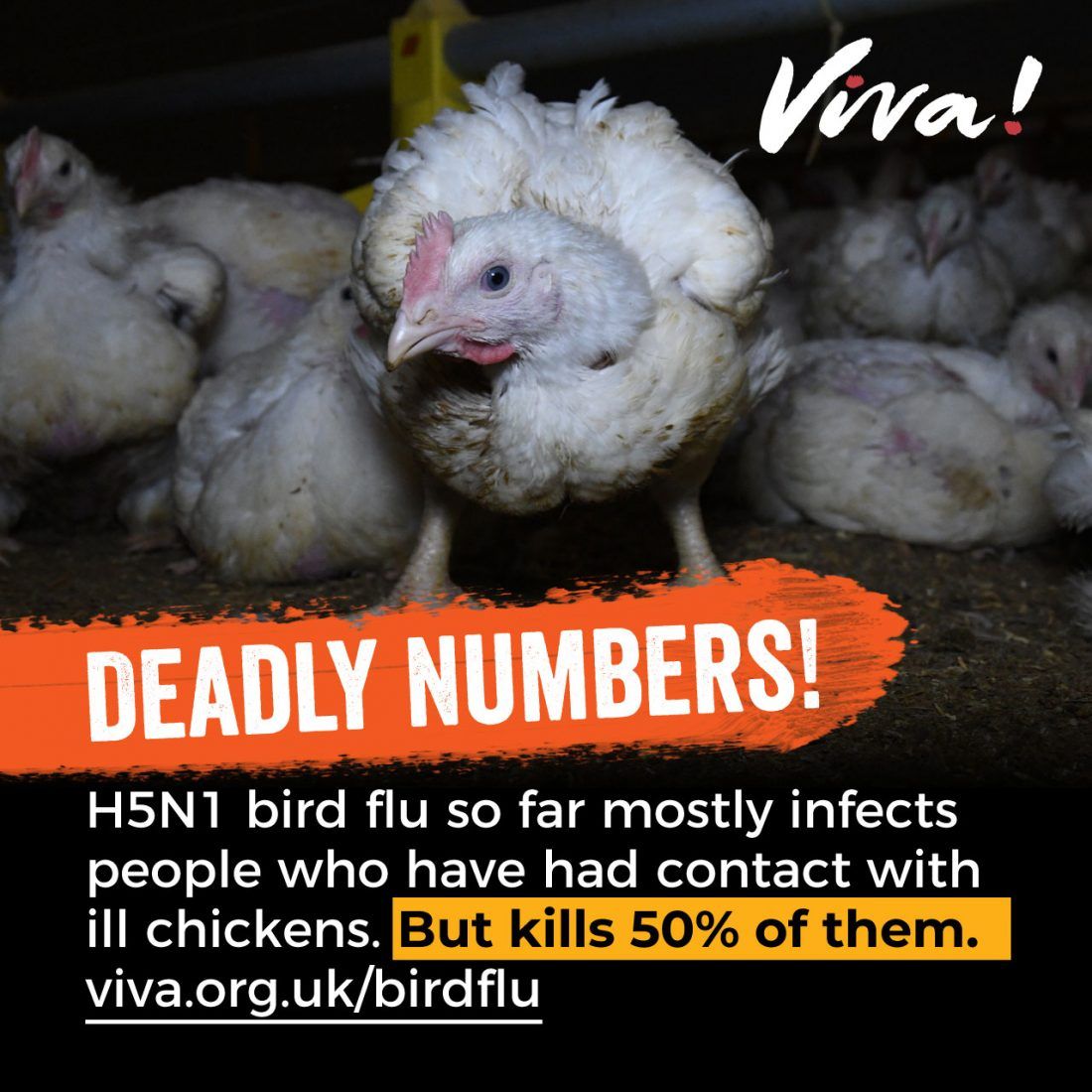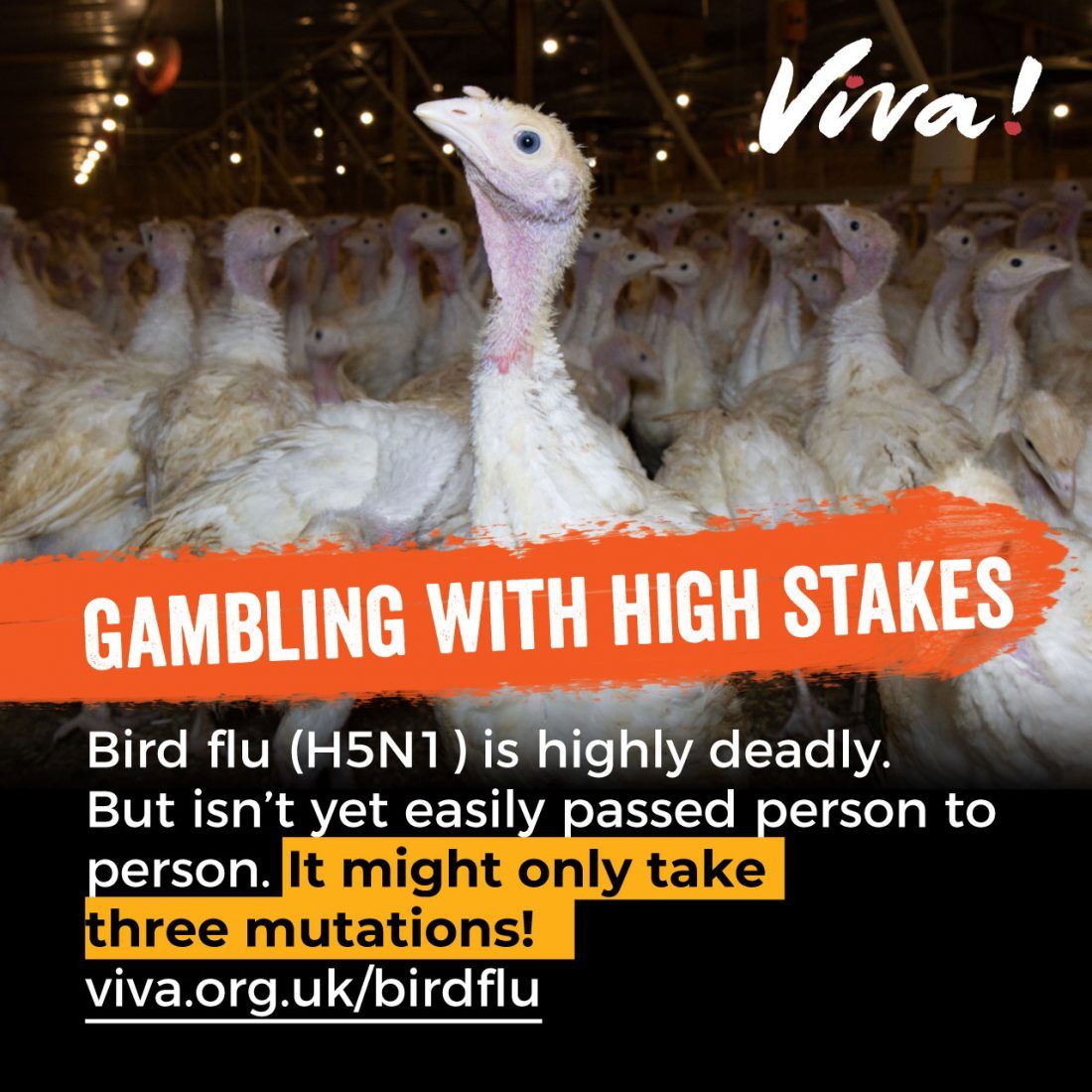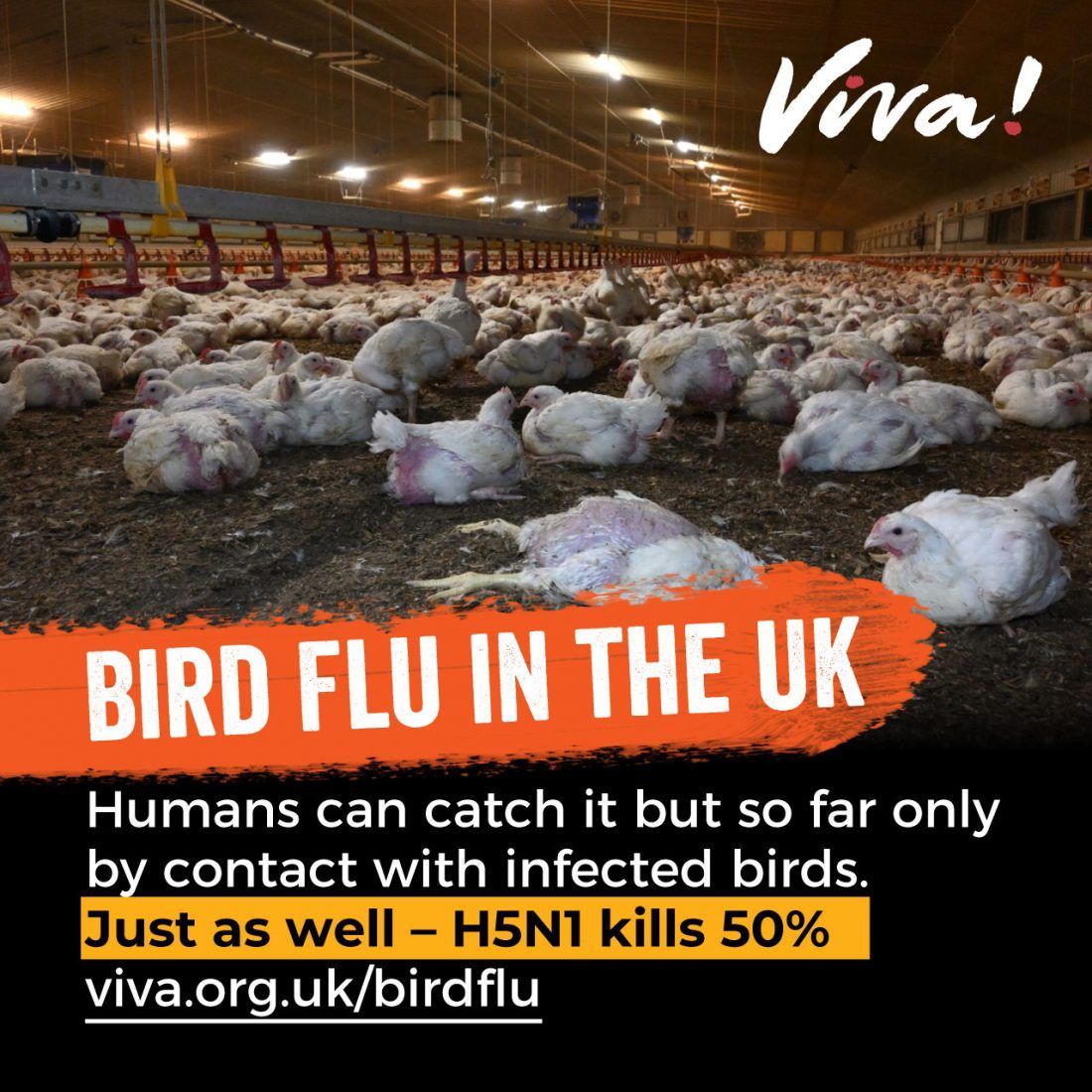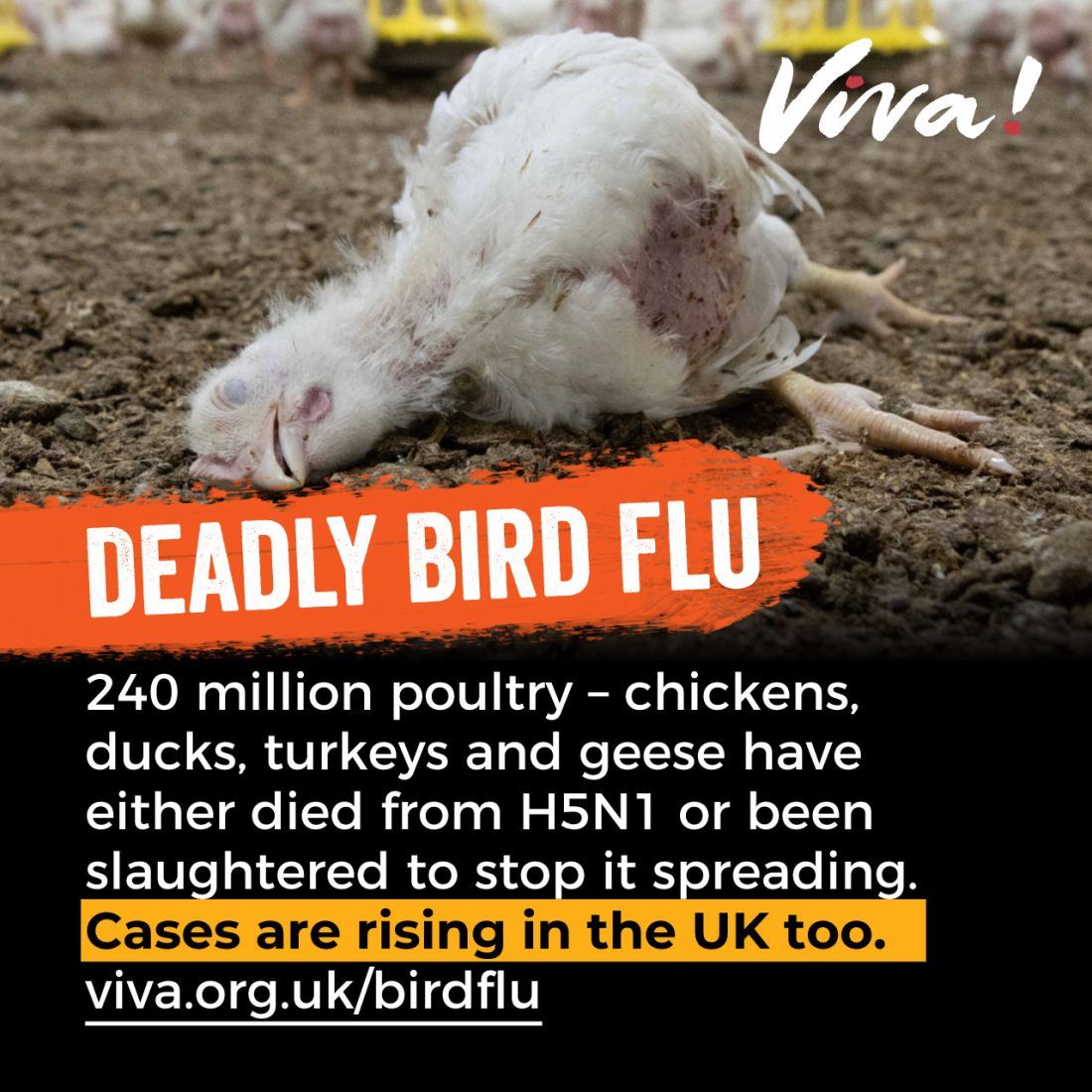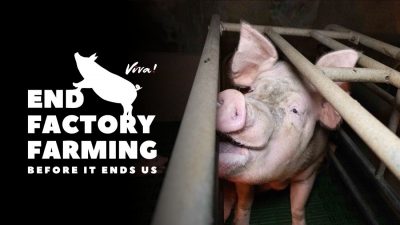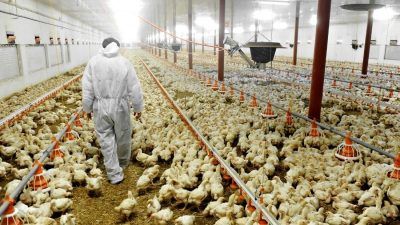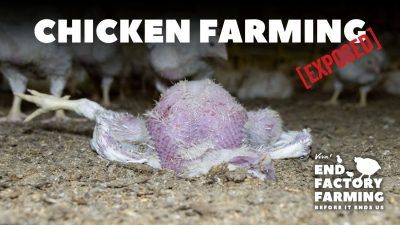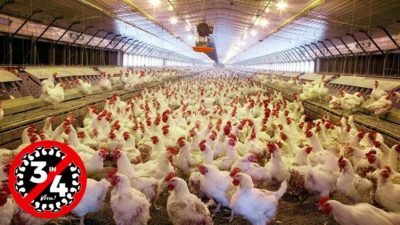Bird flu – Birthplace of the next pandemic?

Avian influenza, or bird flu, is a type of flu that mainly affects birds. It differs from seasonal flu, which circulates each winter, in that the virus is adapted to birds. However, bird flu viruses can infect other animals, including humans, and have done so with deadly consequences.
Several strains of bird flu that have infected people are of particular concern; including H5N1, H7N9, H5N6 and H5N8. These and other bird flu viruses circulate widely in poultry around the world. They are poised to jump or spill over into humans which is leading some scientists to predict it may well be a bird flu virus that causes the next pandemic.
Bird flu outbreaks used to occur in the UK during the winter months only, with cases falling in spring and stopping altogether during the summer months, then starting up again in the autumn. In the winter of 2020-21, for example, the UK experienced less than 30 outbreaks of bird flu in commercial premises and was declared free of bird flu in early September 2021.
In late October 2021, cases of bird flu began again but for the first time ever, they continued through the whole of 2022 and into 2023, as the UK experienced its largest-ever outbreak of bird flu. Between late October 2021 and late October 2022, over 200 outbreaks were reported in commercial premises (mainly commercial poultry farms). An estimated 3.5 million birds have been culled.
As of January 2023, over 320 confirmed cases have been reported since October 2021. This is very worrying as all cases reported since then have been the highly pathogenic H5N1 virus.
Avian Influenza Prevention Zones (AIPZs), strict biosecurity measures and compulsory housing orders have been used across the UK to try and limit the spread of the disease. But they haven’t worked and bird flu continues to spread; showing likely breaches of biosecurity measures. The best way to stop bird flu is to end factory farming and take away the viral reservoir.
Order our brand new bird flu door dropper leaflet now!
In January 2022, The UK Health Security Agency confirmed a case of avian influenza H5N1 in a person in the South West of England. It’s thought that they caught the infection from close, regular contact with H5N1-infected ducks kept in and around their home.
Note, the ‘Eurasian’ H5N1 variant circulating in the UK is highly pathogenic to poultry and other birds but can be clearly distinguished from the previous ‘Asian’ H5N1 strains, which belong to a different subgroup.
Bird flu came to global attention the late 1990s when some farmed geese in China fell ill with a new highly pathogenic strain of virus called H5N1. It killed more than 40 per cent of infected birds. In 1997, it spread to poultry farms and live-poultry markets in Hong Kong where it infected 18 people, six of whom died. To try and stop the outbreak, the government ordered the slaughter of more than 1.5 million chickens. Further H5N1 cases were seen in 2003. Since then, there have been over 15,000 poultry outbreaks, 865 cases in humans and 456 deaths – mostly teenagers and young adults. That’s a death rate of 53 per cent! Seasonal flu kills around 0.1 per cent of people infected.
In 2013, human infections with the H7N9 virus were reported for the first time in China. Since then, the virus has spread throughout the poultry population in the country and resulted in over 1,500 reported human cases and many human deaths.
Bird flu viruses have been around for thousands of years, passing in water between wild waterbirds – especially amongst ducks, geese and swans. Water was the perfect environment for the virus to coexist with birds – without making them ill. When these wild waterbirds were taken to market though, the virus could no longer spread in water and had to mutate or die. In this new, stressful environment, random mutations enabled viruses to spread from bird to bird in saliva, nasal secretions and faeces and bird flu subsequently became a more sinister disease.
Bird flu has now spread to poultry farms; infecting chickens, turkeys and ducks around the world. In farmed birds, what were low pathogenic strains have mutated into highly pathogenic, more contagious ones that cause severe illness and death. There is no readily available treatment and most countries have a policy of culling entire flocks when infection occurs. Consequently, tens of millions of birds have died from the disease and hundreds of millions have been culled in an effort to try to stop it spreading.
Although bird flu mainly affects birds, it can infect many other species too; including pigs, cats, dogs, ferrets, whales, horses, seals and humans. New viruses are constantly evolving in birds, pigs and other animals that also carry flu viruses. They can shuffle their genes with human strains, or just adapt to humans directly.
Most cases of bird flu viruses infecting people have resulted from people handling, slaughtering or eating infected (undercooked) poultry, with a handful of person-to-person infections among families caring for sick relatives. Bird flu viruses are among the most dangerous viruses that can affect humans and when they strike, they can be deadly. Bad news for the individual, but if it were to mutate and become more easily transmissible, we could be looking at another pandemic.
Before Covid-19, most scientists thought the next pandemic would be caused by a virus spreading to humans from a poultry or pig farm. Factory farms provide the perfect environment for mutating viruses. Chickens and pigs are raised in closed, filthy, stressful and crowded industrial facilities, with little or no natural light – important as UV light harms viruses. This is an ideal breeding ground for a disease with pandemic potential.
The poultry industry likes to blame the spread of bird flu on migratory birds. Wild birds may contribute to the local spread of the virus, but commercial poultry farming is the major factor responsible for the global spread of bird flu. It is a perfect storm of our own making.
In 1996, The Lancet reported that a person in England, who kept ducks next to a pond frequented by Canada geese, mallards and other wild birds, was one of the first recorded cases in which bird flu spread directly to humans. Fortunately, they only suffered a bad case of conjunctivitis. Such isolated cases have probably been happening for centuries. But the vast scale of animal agriculture today plays a central role in maintaining seasonal flu and poses an ongoing pandemic threat.
Because pigs can be infected with human, avian and swine flu viruses, they are described as ideal mixing vessels. This is because, if they are infected with more than one type of flu virus at once, mixing and matching can lead to the emergence of a completely new virus – with pandemic potential. Large pig farms – like UK factory farms – give viruses the opportunity to meet and mix in their favourite host before jumping to humans.
Genetic analysis of the virus that caused the 2009 swine flu pandemic showed how pig farming can give rise to pandemics and how factory farm workers’ exposure to huge numbers of pigs vastly increases that risk. That particular H1N1 virus adapted to humans and is now one of the seasonal flu viruses that circulate each winter. If you’ve had flu in recent years, there’s a good chance it was this one.
Scientists have been warning us for years about the pandemic threat posed by factory farming and many fear that it’s only a matter of time before the next pandemic is caused by a flu virus making the jump to humans from poultry or pigs being farmed for meat.
See Viva!’s report Factory farms – a breeding ground for disease – the pandemic threat of animal agriculture.
As we have seen with Covid-19, viruses can mutate and become more easily transmissible. Flu viruses are especially prone to changes and mutations occur frequently, which is why a new flu vaccine is developed every year to try and keep up. Scientists say that H5N1 may be as few as three mutations away from becoming more easily transmissible. As this is such a deadly disease, the results of this would be catastrophic.
Mutations in viruses occur naturally all the time. So, it follows that if huge numbers of birds are infected, the number of mutated viruses increases. For a virus, a mutation that enables it to spread more easily is like hitting the jackpot. Imagine 10 people playing on fruit machines, the chances of winning the jackpot are low, but, if 100 million people play, someone is bound to win! There are currently 26 billion chickens in the world, providing a massive viral reservoir for a mutating virus to take a gamble.

- Senior public health expert at the World Health Organisation, David Nabarro, warned that should H5N1 mutate and become more transmissible, a pandemic caused by this virus could result in the deaths of anywhere between five and 150 million It’s hard to imagine such devastation.
- Writing in the journal Emerging Infectious Diseases, scientists said: “If this virus acquires human-to-human transmissibility with its present fatality rate of 50 per cent, the resulting pandemic would be akin to a global tsunami. If it killed those infected at even a fraction of this rate, the results would be catastrophic.”
It was trading live animals in markets that caused bird flu to mutate from its originally harmless forms in wild birds to far deadlier versions. Now, factory farms, housing tens of thousands of birds, are providing the ideal environment for infectious diseases to mutate and spread – a pandemic in the making.
Juliet Gellatley, founder and director of Viva! says: “Viva! have been into these hellholes and exposed the horrific conditions chickens and pigs are forced to endure during their short lives. Over one billion chickens are slaughtered for their meat in the UK every year and around 95 per cent are intensively reared on factory farms. We are literally handing viruses the perfect opportunity to mutate into more deadly forms.
“There are over 26 billion chickens in the world – more than three birds for every single person on the planet. Whichever way you look at it, domesticated poultry are massively over-represented among the world’s bird population.”
We understand the threat and know the answer. But the government are not listening. If they disregard the warnings, they will condemn many people to die, needlessly. The scramble for a universal flu vaccine has already begun. But there is a far simpler solution – we could just remove the viral reservoir and end factory farming, before it ends us!
For more detailed information about bird flu click here.
Click here for the best vegan swaps for your favourite chicken, egg, duck and turkey products!
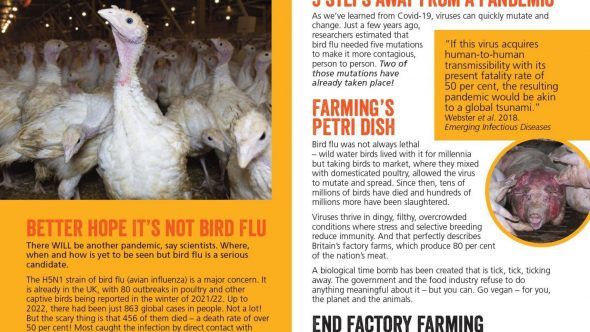
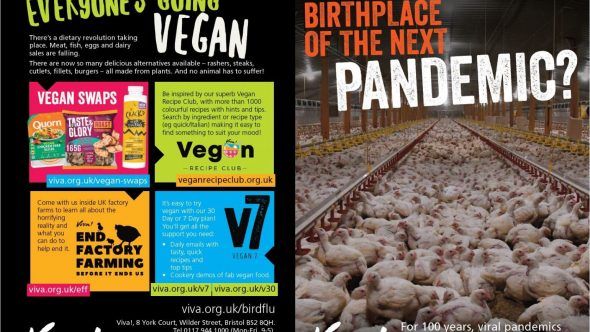
End Factory Farming


Vegan Food and Living: Will bird flu be the next pandemic?

Express: Bird flu outbreak: ‘Highly pathogenic’ infection spreads across UK – 108 cases confirmed
[wonderplugin_cond deviceinclude=”Mobile”]
[/wonderplugin_cond][wonderplugin_cond deviceexclude=”Mobile”][give_form id=”59086″][/wonderplugin_cond]
By becoming a monthly donor, you will automatically become a Viva! Supporter and receive a subscription to Viva! Life magazine and a supporter welcome pack.We have lots of other welcome goodies available to our supporters, such as our fantastic range of discounts in our Supporter Discount Scheme.




